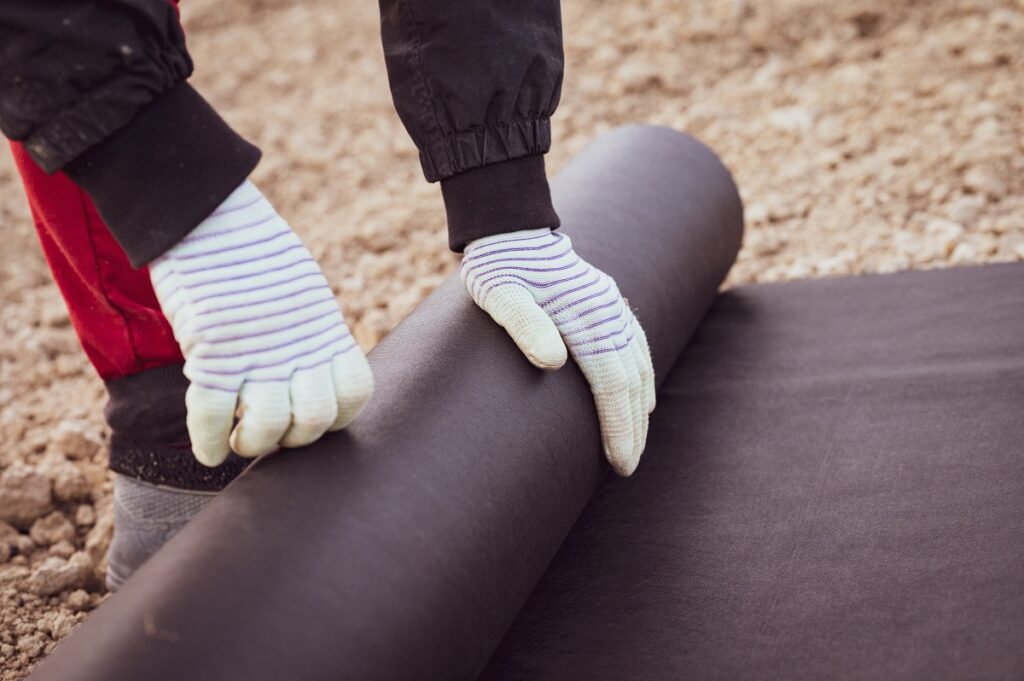
Agro-textile and agro-textile are two popular materials used in horticulture as well as agriculture. Both aim to promote plant growth, prevent weed overgrowth and protect the soil from erosion. Although they look similar at first glance, they differ in construction, durability and mode of action. Agro-textile It is light, flexible, water- and air-permeable, making it suitable for delicate plants. Agro-textile, on the other hand, is thicker and more resistant to damage, so it is better suited for trees, shrubs or garden paths. In this article, we will take a closer look, with what precisely the difference between agro fleece and agro textiles and when it is worth reaching for each of these materials.
Which is a better choice, agro-textile or agro-textile? Before answering this question, it is worth taking a closer look at the products and checking, what is the difference between an agro-textile and an agro-woven fabric. These are primarily strength, water permeability and air permeability. For the production of agro-textiles fibres are used a to produce agro textiles fabric strips of polypropylene, the largest difference between these materials. The use of the same material, but in a different form, affects the properties of polypropylene products. The nonwoven agro-textile is characterised by its high permeability, which allows the plants to develop properly, providing them with adequate access to water and air. It is lightweight and flexible, which makes it easy to install, as well as easy to adapt to uneven terrain. However, it is worth noting that due to its structure, it is less resistant to mechanical damage than agro-textile.
Now let’s take a look at this, with what still The difference between agro-textile and agro-fibre. Thanks to its manufacture from strong, fabric strips of polypropylene, which are densely woven, it stands out for its much greater mechanical strength. Therefore, it is ideal for areas subjected to intensive use. However, its greater durability is affected by reduced water and air permeability, which can affect plant growth conditions. When choosing between agro-textile vs. agro-fibre, it is worth considering their differences, in order to select the material for the specific needs of the crop and the conditions in which it will be used.
Agro-textile and agro-textile have a similar function in the garden, but differ in construction and scope of application. The choice between the two depends mainly on the type of crop, expectations of the durability of the fabric, and the way it works. Below is an overview to help you choose the right fabric for your needs:
| Feature and application | Agro-textile | Agro-textile |
| Permeability | High — allows water and air to flow freely. | Restricted — retains more water but still drains excess water. |
| Flexibility | Very good — easily adapts to uneven terrain. | Stiffer — more difficult to install on inclines. |
| Mechanical strength | Lower — can be damaged by heavy use. | High — abrasion and pressure resistant. |
| Application | Vegetable beds, flower beds, young plants, frost protection. | Paths, driveways, orchards, rock gardens, large areas. |
| Protection against weeds | Good, especially in delicate crops. | Very effective, also over large areas. |
| The biggest advantage | Lightweight and permeable — supports plant growth. | Durability, resistance — long-lasting protection of the substrate. |
With this overview, it is easy to see that agro-fibre will work well where hydration and air supply to the roots is important. Whereas agro-textile will be a better choice for demanding, long-term applications — wherever the substrate is heavily loaded or subject to damage.
Agro-textile and agro-textile represent two different approaches to garden care. The former supports the natural processes of the soil, while the latter guarantees long-term protection as well as tidiness over large areas. Both materials are effective in reducing weed growth and improving growing conditions, which is why they are increasingly replacing traditional mulching methods.
By choosing the right type of fabric, you not only gain a better-looking garden, but also save time and labour in maintenance. Check out the available product variants from Sammler, match them to your needs and create a space where plants grow healthily and the soil remains protected for many seasons.